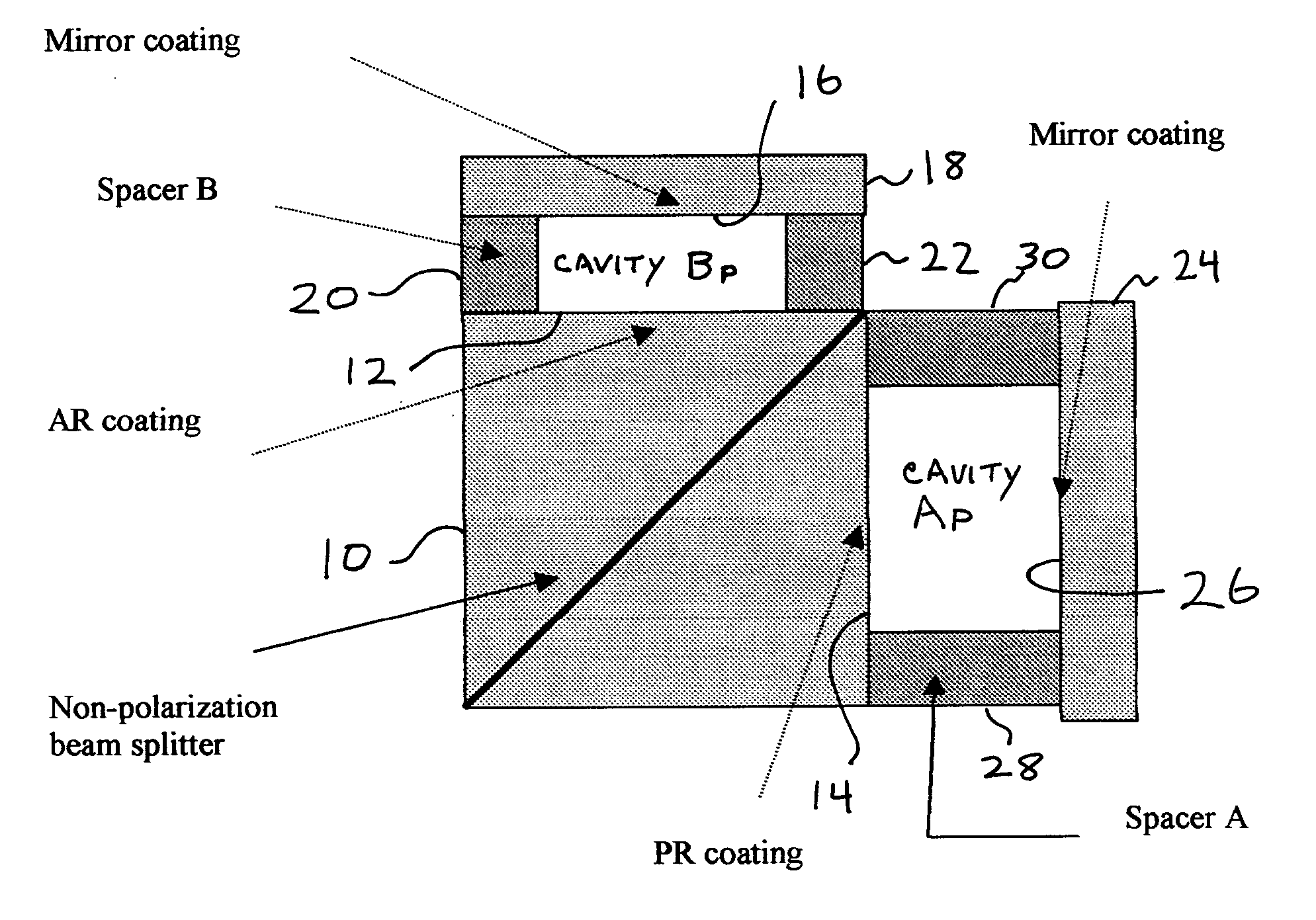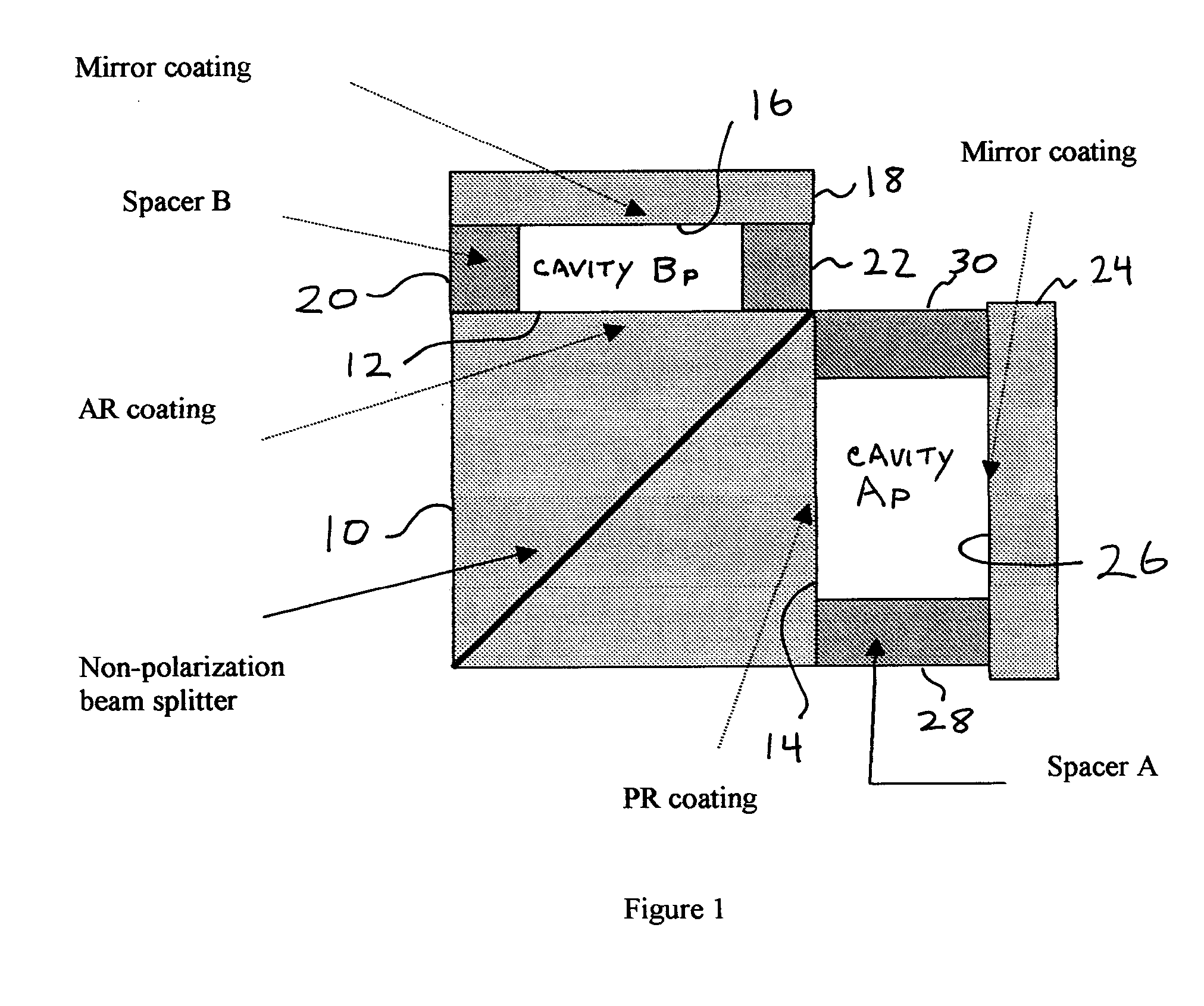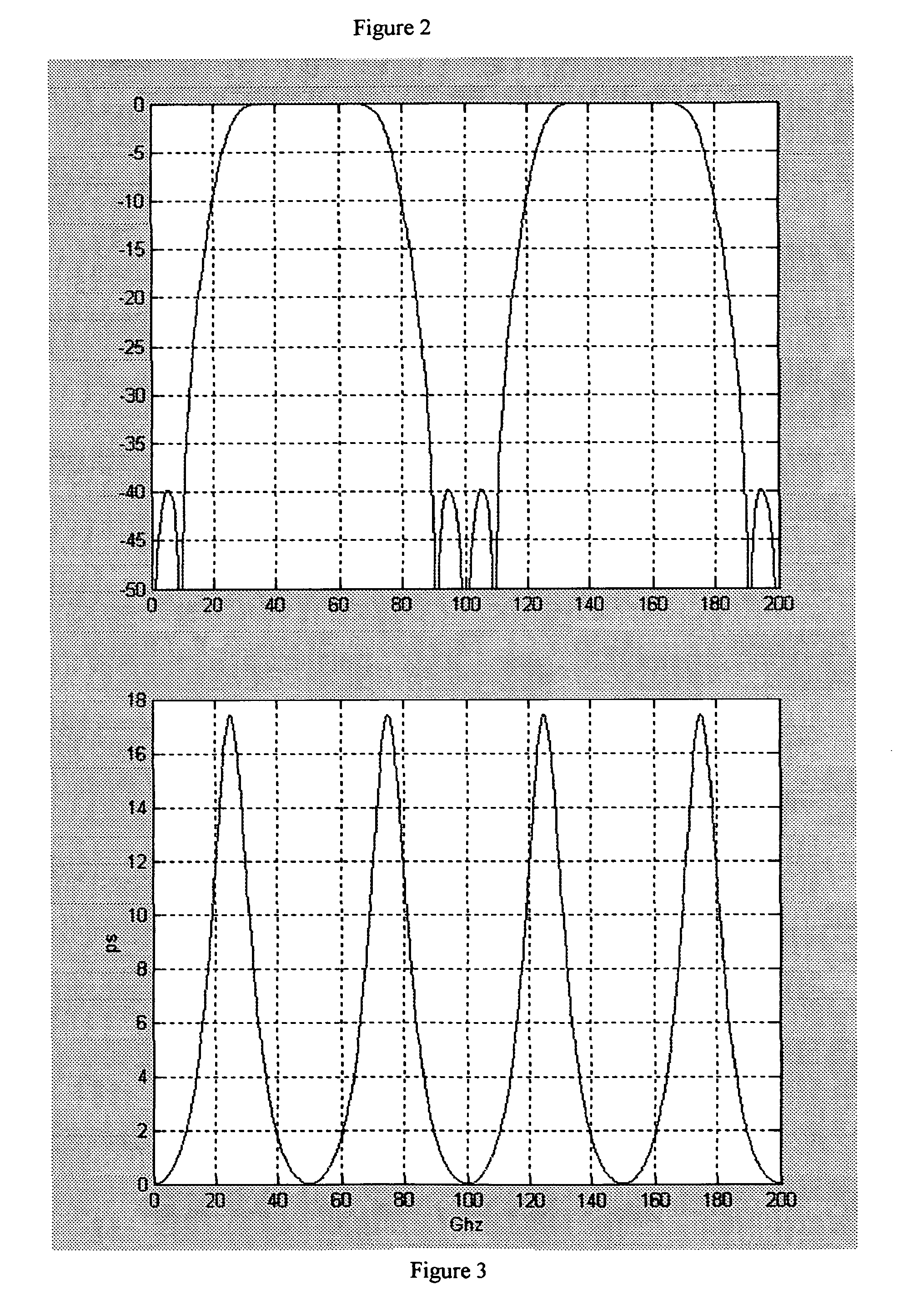Variable dispersion step-phase interferometers
a step-phase interferometer and variable dispersion technology, applied in the field of interleaving frequencies in optical communication systems, can solve the problems of increasing the insertion loss of the device, the increase of the manufacturing cost, and the widening of the bandwidth
- Summary
- Abstract
- Description
- Claims
- Application Information
AI Technical Summary
Benefits of technology
Problems solved by technology
Method used
Image
Examples
Embodiment Construction
[0031] The present invention teaches variable dispersion step-phase interferometers. Two different types of step-phase interleavers are taught in this disclosure. By properly using them, one can achieve low dispersion without using a dispersion compensation module (DCM). The first one is herein referred to as an N-type interleaver, which has a negative dispersion slope near the center of the pass band. In an optical network, cascading an N-type and a P-type interleaver in a pair produces a net dispersion that becomes close to zero. The second proposed interleaver is herein referred to as a Z-type interleaver, which has a dispersion that is close to zero within the pass band. The P-, N- and Z-type interleavers shown herein can be arranged in various systems to produce low dispersion optical networks.
[0032]FIG. 1 shows a typical step-phase interleaver, which is described in detail in U.S. Pat. No. 6,587,204, incorporated herein by reference. The cavity at the right hand side of the u...
PUM
 Login to View More
Login to View More Abstract
Description
Claims
Application Information
 Login to View More
Login to View More - R&D
- Intellectual Property
- Life Sciences
- Materials
- Tech Scout
- Unparalleled Data Quality
- Higher Quality Content
- 60% Fewer Hallucinations
Browse by: Latest US Patents, China's latest patents, Technical Efficacy Thesaurus, Application Domain, Technology Topic, Popular Technical Reports.
© 2025 PatSnap. All rights reserved.Legal|Privacy policy|Modern Slavery Act Transparency Statement|Sitemap|About US| Contact US: help@patsnap.com



